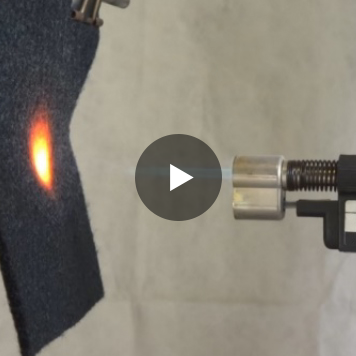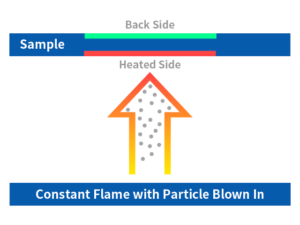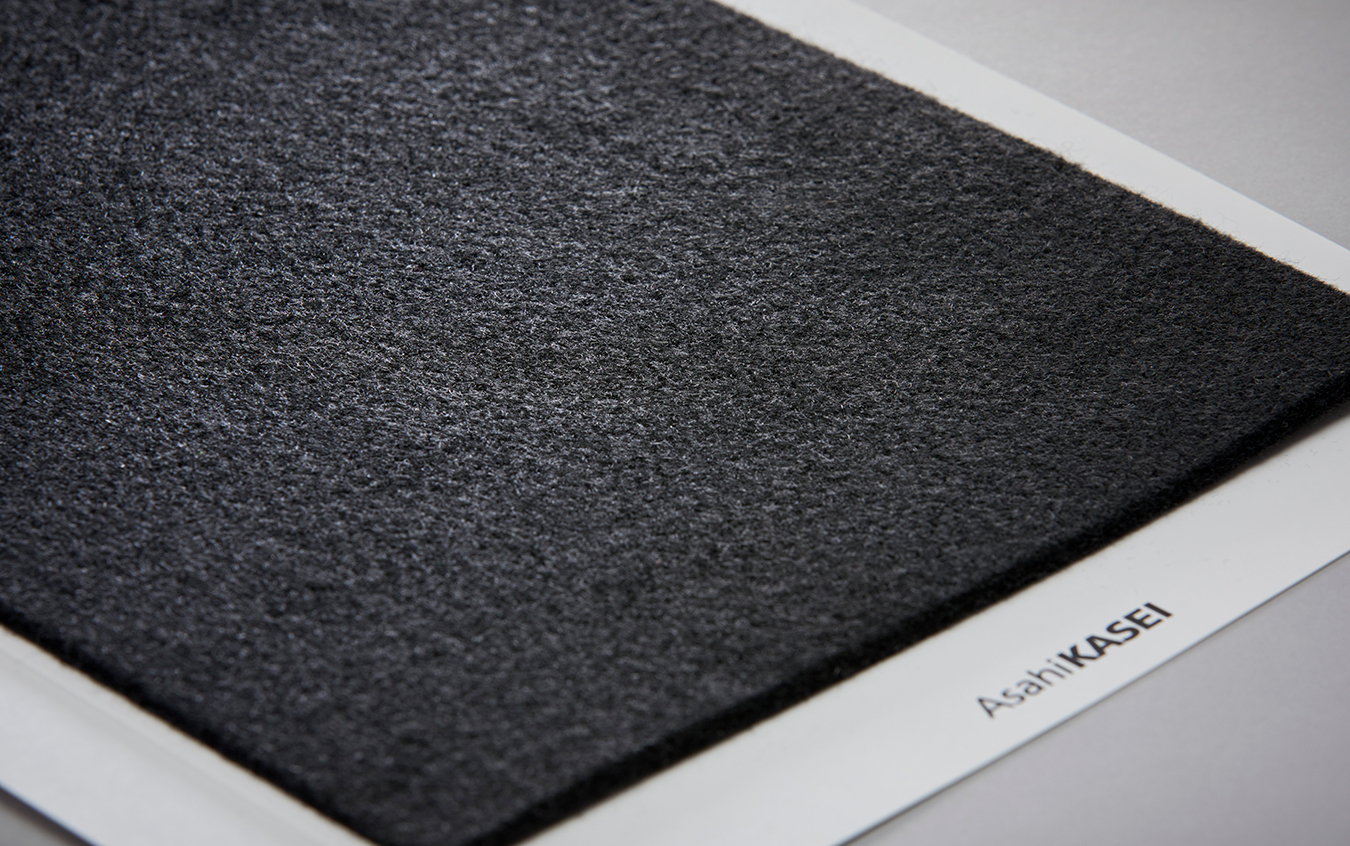
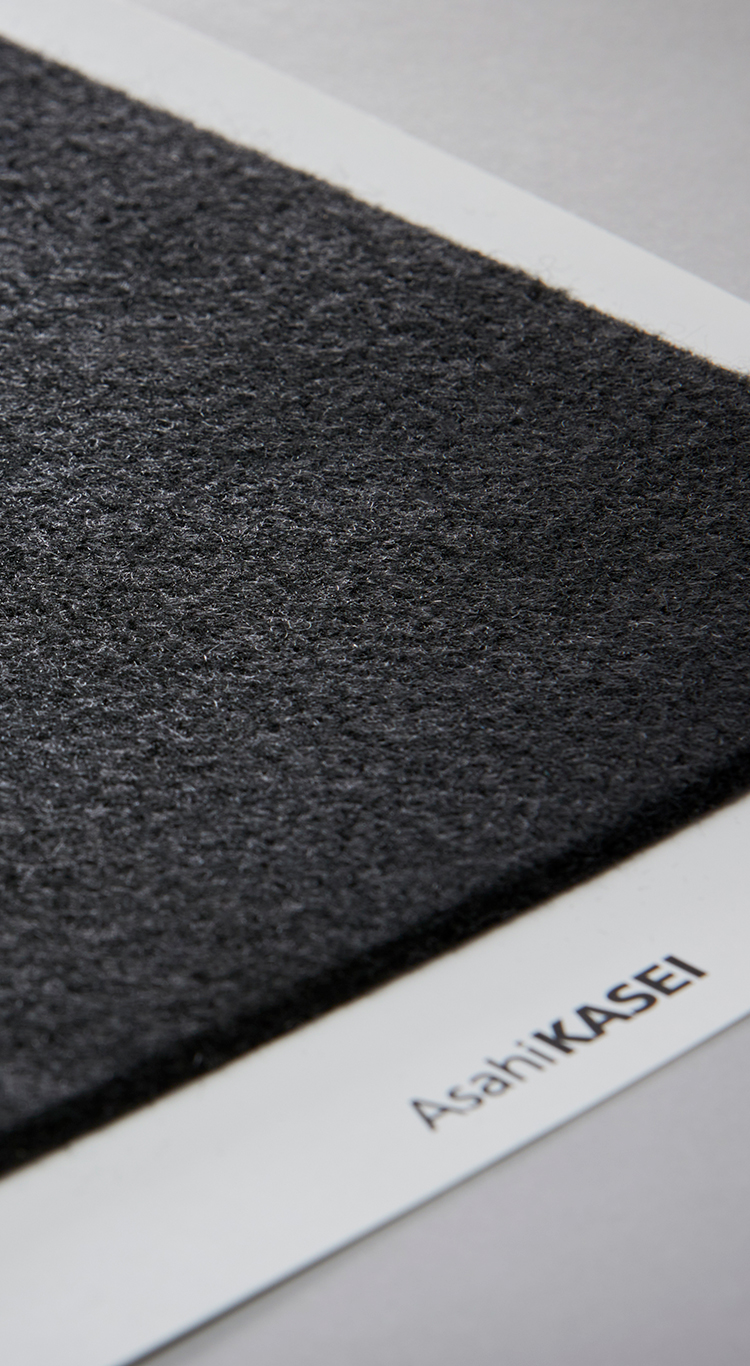
Woven and non-woven fabrics
LASTAN™️
Marketing Areas
- ALL
Organic non-woven fabric with excellent flame retardancy
LASTAN™️ has higher flame retardancy than most other organic non-woven fabrics. Even in case of fire, LASTAN™️ does not easily burn and blocks heat as well as flames due to various post-processing methods applied to it. With its soft and supple texture, it is highly regarded as an optimal material that meets the needs related to disaster prevention, safety, and industrial materials.
QWhat is the heat resistant temperature of LASTAN™️?
QCan post-processing be applied to LASTAN™️?
QWhat types of LASTAN™️ do you provide?
QFor what applications is LASTAN™️ used?
QFor what applications is LASTAN™️ non-woven fabric used?
QDoes it have insulation performance?
QDoes it have thermal insulation properties?
Q How long can it be used?
QWhat is the upper-temperature limit of LASTAN™️?
LASTAN™️ is a light-weight, flame-retardant non-woven material ideal for preventing thermal propagation of lithium-ion batteries (LiB).
LASTAN™️ is a light-weight, flame-retardant non-woven material ideal for preventing thermal propagation of lithium-ion batteries (LiB).
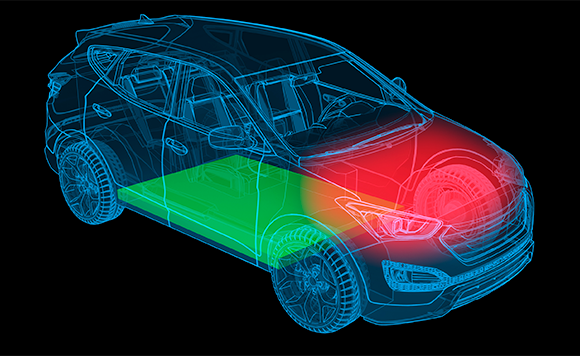
Flame retardancy
Fabrics with an LOI (limiting oxygen index) of 26.5 or higher are said to be self-extinguishing, and fabrics with an LOI higher than the above are called flame retardant fabrics. LASTAN™️ has an LOI much higher than the standards. It is a non-flammable non-woven fabric that never burns in the air. Regarding the UL94 Standards which indicate the flame resistance of materials, LASTAN™️ has obtained the highest level, 5VA. It is the most suitable base fabric and surface material for high-performance functional materials that meet various flameproof and fire-retardant standards.
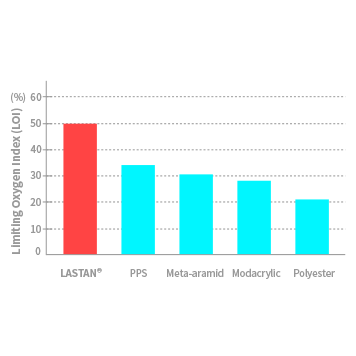
Heat resistance
LASTAN™️ is highly heat-resistant to retain its original shape without burning, melting, and shrinking even when it comes into contact with fire. LASTAN™️ has obtained a "non-combustible" certification after Material Combustion Test for Railroad Vehicles, which evaluates the non-combustibility performance of materials used for railway vehicles. Regarding measures against railway vehicle fires, a section of technical criteria related to railways which are specified in a Ministerial Ordinance issued by the Ministry of Land, Infrastructure, Transport and Tourism stipulates as follows: “The body of passenger cars shall be built with the appropriate structure and materials so that they can prevent prospective fires from starting and spreading."
LASTAN™️ is used as a heat-resistant material for railway vehicles because of its nonflammability property.
Excellent processability
Traditional inorganic fiber such as glass fiber and aramid fiber has a hard texture. On the other hand, LASTAN™️ has a very soft, supple touch and wool-like texture, while keeping excellent flame resistance. In addition, it is extremely lightweight compared to carbon fiber and inorganic fiber. With these features, LASTAN™️ is suitable for various types of post-processing such as making composites composed of LASTAN™️ and other materials.
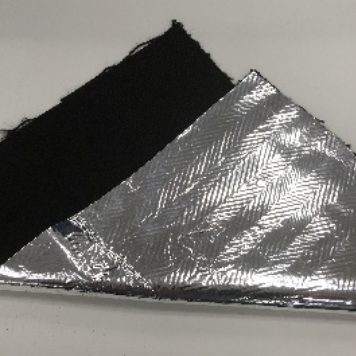
Flameproof material around LiBs
Interest in the environmental impact of increased greenhouse gas emissions has been growing year by year, and the shift from gasoline vehicles to EV vehicles is accelerating. On the other hand, fire from EV vehicle batteries has become a problem, and automotive manufacturers are looking for measures to prevent the fire. Applying LASTAN® around LiBs would delay the spread of fire due to LiB thermal runaway, which ensures enough time for the passengers to evacuate from the burning vehicle.
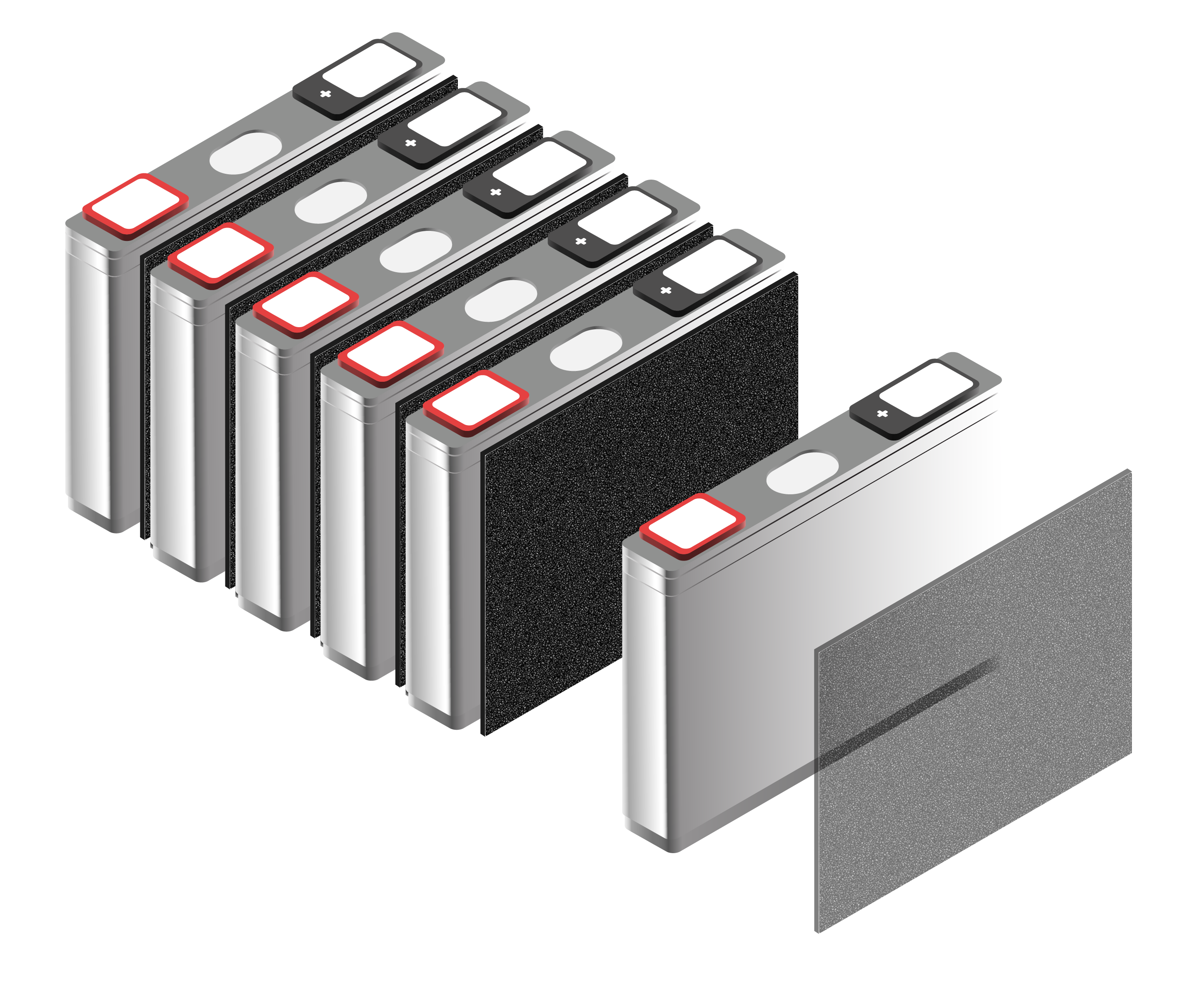
Between Cell Barrier Materials
Lastan™, a thin textile with excellent processability, provides thermal runaway propagation solutions for xEV battery designs. Our between cell materials are compressible, high temperature stable and compatible with various cell types.
・Follows changes in battery cell shape and rebounds
・No cracks as other mineral-based product
・A lower dust content than aerogel
・Good processability
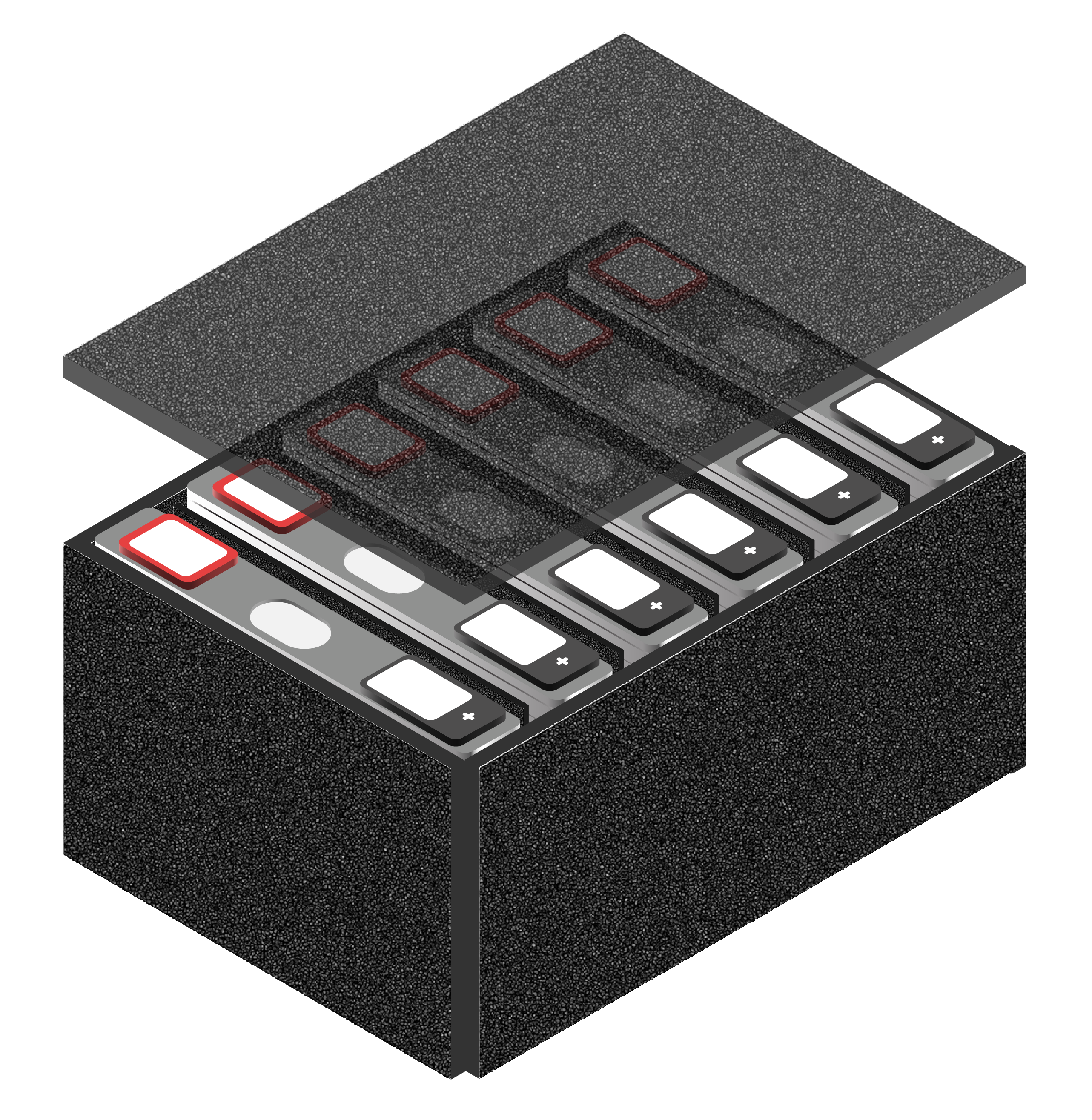
Pack top cover for module
The challenge is how to prevent flames, blasting, and heat transfer and protect the safety of the occupants when a thermal event occurs. The new Lastan grade is capable of withstanding flames up to 1300℃, blasting, and has high performance in preventing heat transfer.
・High thermal insulation properties
・Blast / Flame resistant
・Light weight
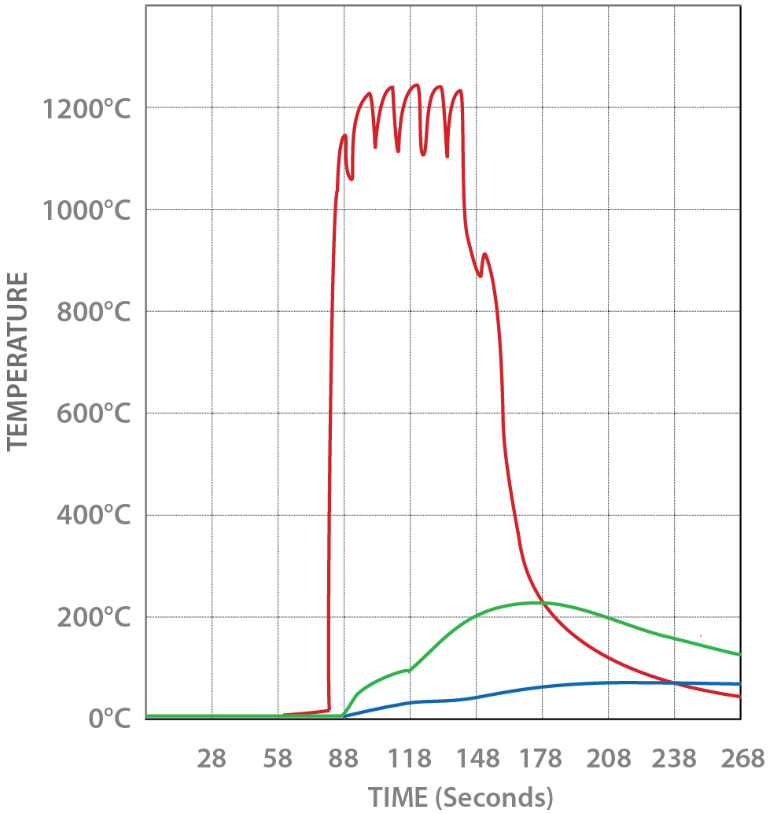
LASTAN™ Flame Test
What is the Flame Test?
Asahi Kasei has set fire to our LASTAN™ sample to see how the temperature affects both sides.
What was the Result?
Although the heated side goes up to 1250℃, the back side remains at 250℃. This means our LASTAN™ has excellent heat transfer preventing properties.
*According to our research, the data on the graph are measured values, not guaranteed values.
Flame retardant insulation
LASTAN™️ contributes to a comfortable vehicle interior environment by shutting off heat radiated from the engine.
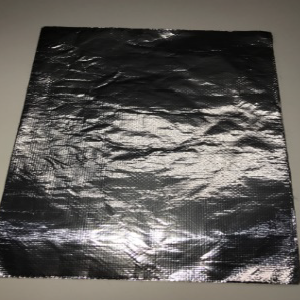
Electrical insulation
Many electric wires are used in automobiles. The wires include those for headlights, air conditioners, and computerized engines. LASTAN™️ can prevent the fire due to short-circuit of electrical wire from spreading to other parts of the vehicle.
Flameproof material around LiBs
Interest in the environmental impact of increased greenhouse gas emissions has been growing year by year, and the shift from gasoline vehicles to EV vehicles is accelerating. On the other hand, fire from EV vehicle batteries has become a problem, and automotive manufacturers are looking for measures to prevent the fire. Applying LASTAN™️ around LiBs would delay the spread of fire due to LiB thermal runaway, which ensures enough time for the passengers to evacuate from the burning vehicle.
What are the Characteristics of LASTAN™?
LASTAN™ is a flame-resistant fiber, made extremely hard to burn by baking threads of a special acrylic fiber in air at 200 to 300°C.
Efforts toward the environment
RoHS Directive:(Directive on the Restriction of the use of certain Hazardous Substances in electrical equipment)
In Europe, since July 1, 2006, the RoHS Directive has been enacted to restrict the use of hazardous substances in electrical and electronic equipment. The Directive regulates the use of six harmful substances: Lead, mercury, cadmium, hexavalent chromium, PBB, and PBDE.
The raw materials of LASTAN™️ also comply with other regulations including the REACH and the TSCA. Contact us for further information on conditions such as compliance with the latest REACH SVHC List.
REACH:Registration, Evaluation, Authorization and Restriction of Chemicals
The REACH Regulation is the comprehensive regulations of the European Parliament and the European Council on the registration, assessment, authorization, and restriction of chemicals, which entered into force on 1 June 2007.
TSCA:Toxic Substances Control Act
U.S. law for regulating harmful substances. Law concerning the regulation of harmful chemical substances.
Other Applications
(1) Flameproof and flame-retardant materials: Fire resistant sound absorption materials for railways, flameproof materials for household appliances, flameproof materials for air conditioners, and other applications.(2) Applications related to safety and flame prevention: Welding/fusing spark protection sheets, emergency evacuation clothing, and other applications.
(3) Infrastructure-related applications: Underground cable coverings.
More detail interview
https://asahi-kasei-mobility.com/en/interview/battery_thermal_management/
 Mobility-related information website
Mobility-related information website
